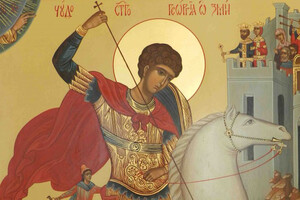Saint is considered a protector of soldiers.

On May 6, Christians of the Eastern rite celebrate George the Victorious Day or St. George's Day. The holiday is dedicated to a saint who lived in the third century AD.
Read also: Easter: what not to do on the holiday
Who is George Winner
The saint was born in Beirut in the third century AD and was raised in a Christian family. George became a military leader under Emperor Diocletian, who was a wise general, but hated Christians and instilled a pagan cult.
When George learned that Christians were in prison, he distributed his property and went to Diocletian. He reported that he was a Christian and opposed the emperor's policies.
Diocletian began to persuade his beloved warrior, but he did not renounce his faith. Then the emperor ordered the torture of George.
St. George endured incredible suffering. He was “wheeled” (tied to a wheel and let this wheel on small glass and sharp stone). They were kept in a pit with hot lime for three days and put on boots with nails inside. The saint endured all these sufferings with prayer and the next day after the tortures he looked healthy and praised God. Many people then believed in Christ, and were also tortured and killed.
St. George was beheaded on Easter in 303, in Lydda, where he spent his childhood. As a sign of respect for the saint, Christians called Lydda differently – Georgioupolis. In the tenth century, the temple where the relics of the saint rested was burned, but in the twelfth century it was restored.
What not to do on St. George's Day
On this day, as on other religious holidays, you can not swear, quarrel and slander. Forbidden and ungodly thoughts.
You can not sew, knit, embroider and use sharp objects.
You can not comb and cut your hair, it is believed that this will make it weak and start fall out.
It is also forbidden to deal with wool, you can not even touch the woolen threads.


